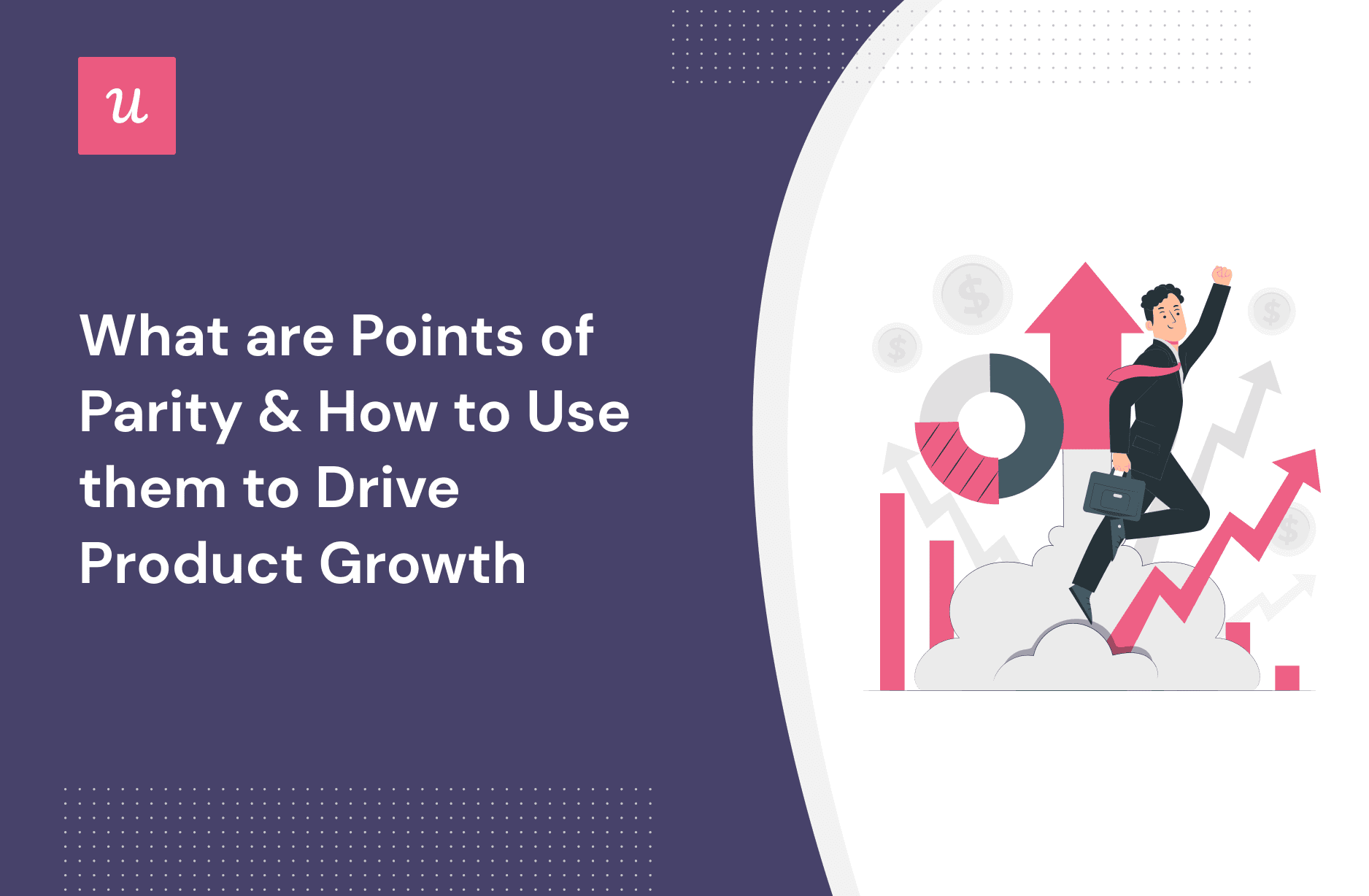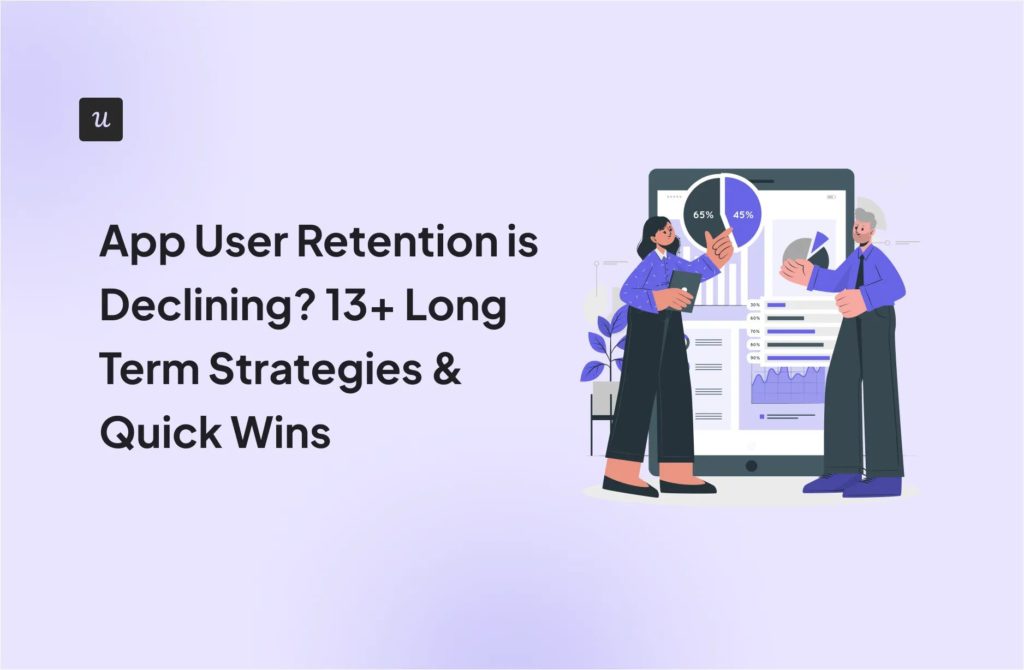
What are Points of Parity & How to Use them to Drive Product Growth
While all the buzz may be around differentiating yourself, understanding your similarities to other solutions is just as important to product-led growth — if not more important.
In this guide, we’re going to go over what points of parity are, why they’re important, and how to put the right strategies in place!
Get The Insights!
The fastest way to learn about Product Growth, Management & Trends.
Points of parity summary
- Points of parity are industry standards that products must share to stay competitive with each other.
- Category points of parity are the expectations/demands that consumers have for a product (e.g. requiring a free trial before they sign up for a paid SaaS subscription).
- Points of parity can be used to keep up with competitive brands while using unique selling points (USPs) to eventually surpass them.
- Points of parity examples include how Amplitude and Mixpanel both offer real-time data monitoring or how both Dropbox and Google Drive have 256-bit encryption on their cloud storage.
- Points of differentiation examples include what types of analytics certain solutions track or how much subscriptions cost in comparison to the closest competitor’s point of pricing.
- Identifying your points of parity will help you build loyalty, gain a competitive advantage, optimize positioning, highlight product differentiation, and avoid excessive differentiation.
- Surveys, user personas, and A/B testing all help you create a branding or GTM strategy around a combination of unique features and the point of parity between competitors in almost any category.
What are points of parity?
Points of parity (POP) are industry standards that businesses or products share in order to remain competitive with one another.
In the SaaS industry, these could include product features, free trials, and self-service support.
Category points of parity
Category points of parity represent conditions that are necessary but not sufficient for brand choice.
In other words, these are the expectations and demands that end-users have for a product. For instance, most users wouldn’t be willing to pay for a subscription without seeing a demo or getting a free trial first.
Similarly, enterprise companies looking for a SaaS solution to add to their tech stack may not be willing to consider a product unless it has features like single-sign-on (SSO), a service-level agreement (SLA), and affords a custom number of seats based on the size of their workforce.
Competitive points of parity
While points of parity are generally conceptualized as a means of catching up or leveling the playing field, they can also be used to attain a competitive advantage over other players in the market.
This is because matching your competitors in multiple domains makes it easier to surpass them in others.
If your company or solution can establish points of parity with its competitors in most product aspects while creating a couple of standout points of difference, then it will put it in a stronger position to win over users.
Points of parity versus points of difference
Points of parity are the ways that your product is the same as that of another legitimate competitor (or competitors, in most cases). These conditions must be met to keep the product on par with the most popular alternative so the target audience stays long enough to notice its unique differences.
Conversely, points of difference are all the things that make your product or brand unique from competitors in a specific category.
To be successful, you must have the bare minimum points of parity necessary to stay competitive while leveraging any unique points of difference to help your brand stand out.
Points of parity examples
If you exclude poor-quality products, you’ll find that most brands share features that are considered mandatory by their customers or prospects.
Analytics tools like Amplitude and Mixpanel both offer real-time data because consumers aren’t interested in lagging product metrics or event tracking.

Another example would be Dropbox and Google Drive. Both platforms have 256-bit encryption across all plans since this is the security standard that most consumers expect when choosing a cloud storage solution.

Points of difference examples
Remember, both Amplitude and Mixpanel offer real-time data tracking that their consumers use to help a business grow.
However, this point of parity is the foundation upon which a differentiation strategy can be introduced, such as how Amplitude offers the behavioral analytics features that Mixpanel lacks.

Going back to our Dropbox example, Google Drive uses lower pricing and integrations with other Google Workspace tools (like Docs or Sheets) to appeal to its target market. This brand positioning is only possible because the points of parity (in this case, security) have already been met.

Why are points of parity important?
Proper product positioning — which requires both points of parity and differentiation — is crucial to how a brand operates and its ability to acquire customers before other brands can lock them in. Here are a few reasons why points of parity are so important:
- Brand loyalty. Having the necessary points of parity covered will help you build customer loyalty and keep them from switching to your competitors.
- Competitive advantage. A combination of points of parity and difference will give you a competitive advantage that can turn your business into a market leader.
- Optimized positioning. Identifying your product or brand’s points of parity will make it easier to find the right balance of product differentiation and improve positioning through branding strategies.
- Differentiation strategy. Meeting the industry-specific points of parity will make it easier for differentiated products to highlight the most compelling point of difference over competitors.
- Excessive differentiation. Excessive product differentiation that strays too far from the solutions that a competing business offers could make it hard to be seen as a legitimate player in the industry.
How to understand your points of parity and create a positioning strategy
Most experienced brand managers know that finding the right positioning strategy and getting the point across to customers through all communication channels is a multi-faceted undertaking.
Here’s a look at how surveys, segmentation, messaging, and positioning all combine to form a competitive edge.
Conduct VoC surveys to understand how users perceive your brand
Collecting customer feedback through in-app VoC surveys can give you a clearer picture of what the average consumer actually expects from your product and brand.
In-app surveys can also give you a deeper understanding of your points of parity based on the responses to VoC questions.

Create user personas and segment them accordingly
Not all customers expect the same things, which is why creating user personas is so important for proper customer segmentation.
Utilizing a user persona template can help you identify the most valuable features for each segment and ensure that brand messaging is always aligned with their unique expectations.

Understand what brand messaging resonates with your customers
A/B testing multiple flows to find the variants that get the highest engagement can give you a deeper understanding of what resonates with your core audience — which you can then use to tailor your brand messaging moving forward.

Create your brand positioning strategy
Having the optimal brand positioning in place for your product’s go-to-market (GTM) strategy is paramount.
This includes basic points of parity, a specific competitive point that serves as your value proposition, and communicating your points of difference or parity to new customers.

Conclusion
As you can see, identifying your points of difference and parity (then combining them with the right brand management practices) will help highlight the must-haves of your product to every consumer in your target market.
If you’re ready to leverage the product quality your SaaS solution has over the competition and drive growth through the in-app experience, then it’s time to get your free Userpilot demo!







